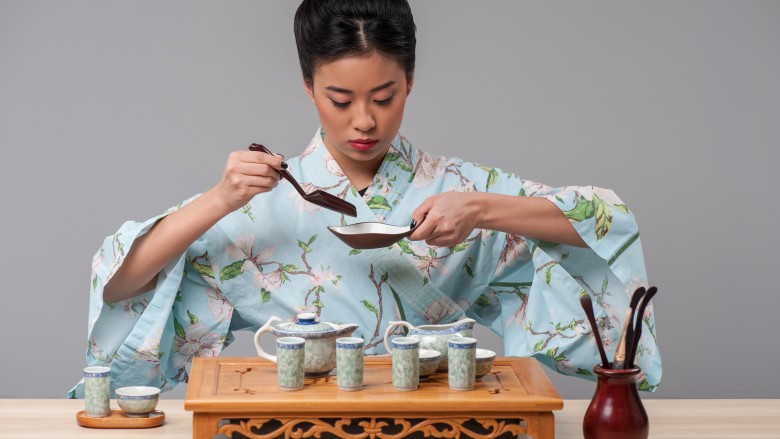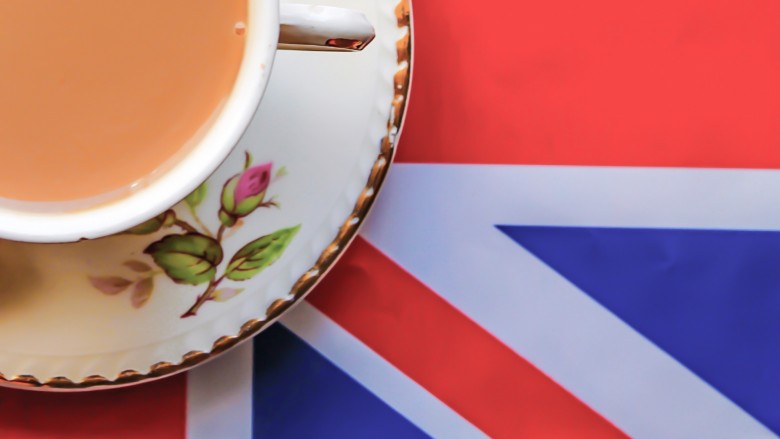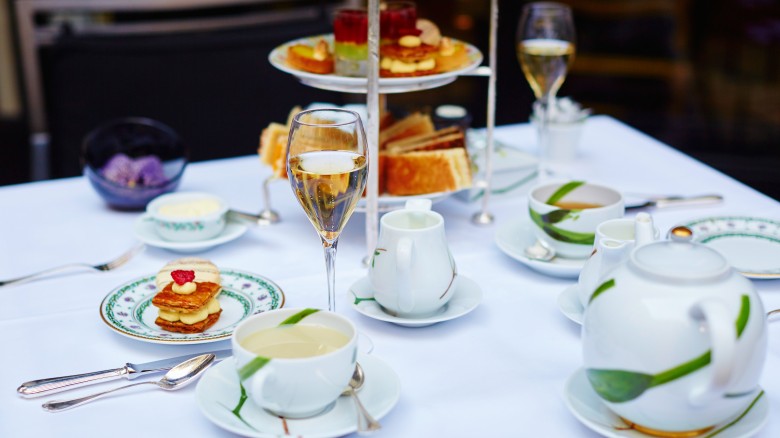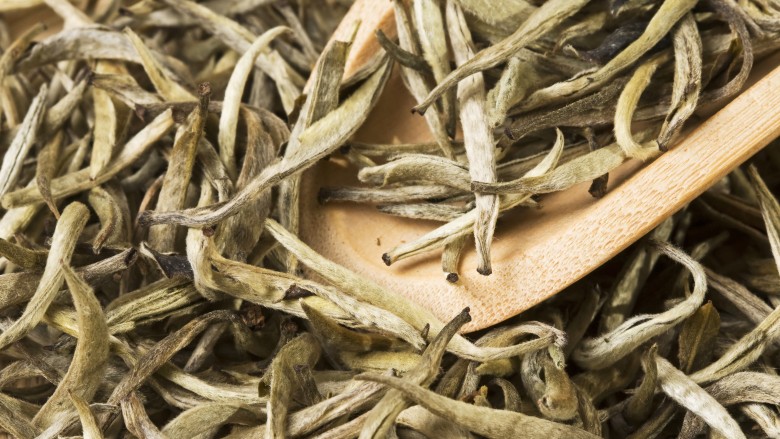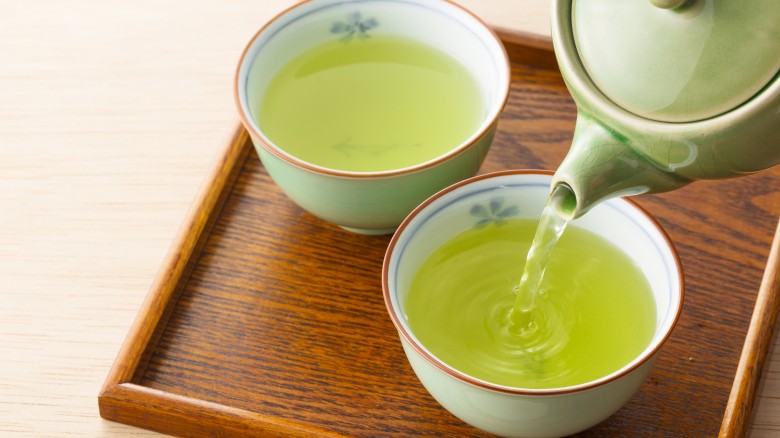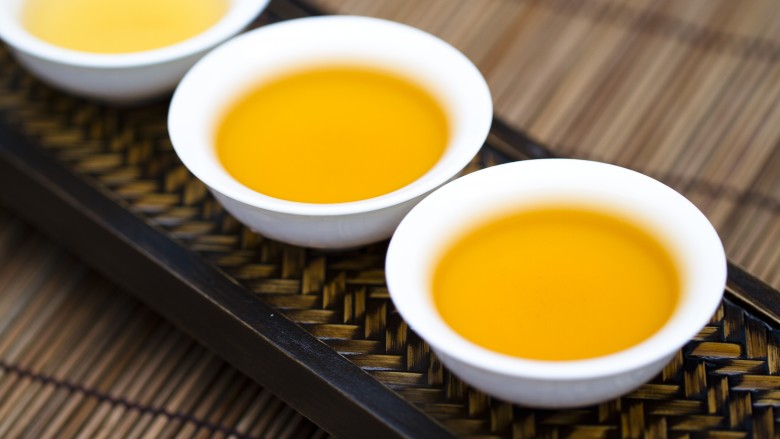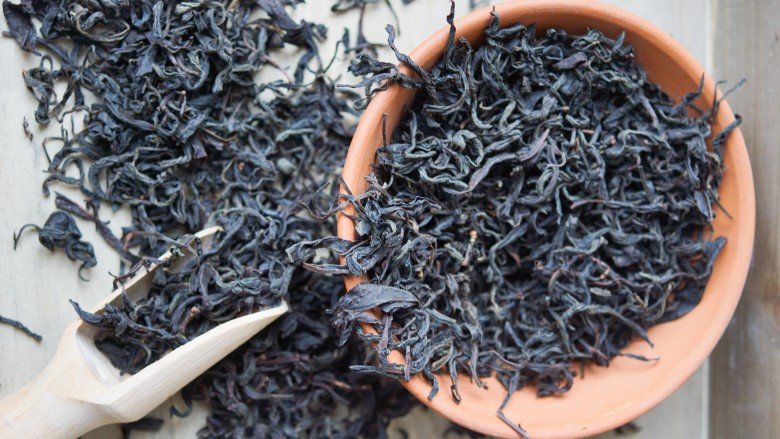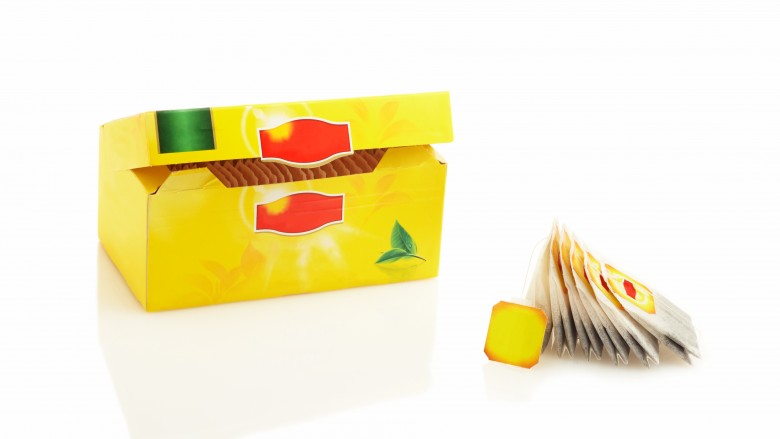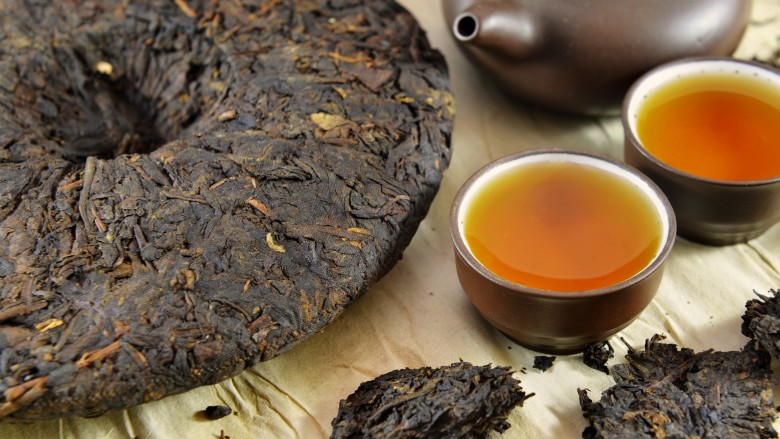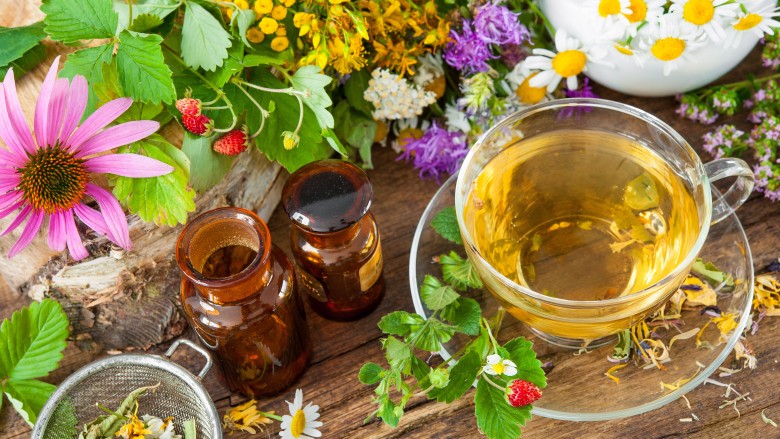The Untold Truth Of Tea
With more than 3,000 varieties of tea in existence around the world, it may surprise you to learn that all true tea comes from the very same plant — the camellia sinensis. That doesn't mean they're all the same, though.The flavor, health benefits, color, and fragrance of teas, in fact, can be incredibly disparate. A tea's characteristics are affected greatly by the terroir of it's mother plant's origins, the variety of the plant itself, the processing and flavoring of the tea leaves, and, of course, the tea masters, who practice the art of bringing us this millennia-old beverage that is second only to water in world consumption.
Brimming with antioxidants, tea has been shown to help fight heart disease, aid in weight loss, protect your bones, prevent cavities, boost the immune system, and may even help fight cancer. But how much do you really know about this leafy elixir? Let's find out.
A brief history of tea in the East
According to Chinese legend, the first hot steaming cup of tea was enjoyed in 2737 BC by the emperor Sheng Nung, when leaves from the nearby Camellia sinensis tree happened to blow into the drinking water his servant had set out to boil. Valued not only for its medicinal properties, but also for the pleasure it brought, tea, or "ch'a" fever swept the nation, making wealthy the merchants and plantation owners dealing in it.
The Chinese kept a tight lid on their beloved elixir for a while, but mention of the beverage appears in Japanese literature from 815 AD, when Buddhist monks delivered tea leaves and seeds to the Bonshakuji temple. Tea, specifically the ground, "matcha" variety of green tea, became a vital part of Japanese culture and ritual, with elaborate tea ceremonies influenced by zen buddhist philosophies becoming part of the revered Samurai class, and later influencing the rest of the country. It was not at all uncommon for families to build tea ceremony structures in their backyards, and women were required to learn the intricacies of performing the tea ceremony, or "chanoyu", before they could marry.
A brief history of tea in the West
Tea was introduced to Europe in the 1600s. A luxury enjoyed by the elite, a home that properly served tea was considered to be the height of class, and portraits often depicted well-heeled families enjoying the beverage. The tea trade was the realm of the Dutch until the British Royal Family got in on the action with the advent of the East India Company, whose primary trade was tea. Thought to be the most powerful monopoly the world has ever seen, the East India Company acted as its own government — forming their own armies, minting their own money, and acquiring territories like Singapore, Hong Kong, and India. Their heyday declined in 1833, when British parliament declared the trade routes open to competition. The trade of tea was fraught with illicit practices like smuggling, bribery, and the dealing of opium. Tensions with China, Britain's source of tea, led to the opium wars, causing the British to explore cultivating tea in one of their new acquisitions — India.
Tea was also all the rage in another of Britain's strongholds, North America. Knowing of their subjects' love of the precious imported elixir, Britain raised the tax on tea to such a degree that at one point it more than doubled in price. The ensuing Boston Tea Party prompted not only the American Revolutionary War, but also Americans love of coffee, as drinking tea soon came to be seen as highly unpatriotic. Americans didn't entirely give up on tea, however, and are credited with the invention of iced tea, as well as tea bags.
"High" tea and "low" tea
These two phrases are often used interchangeably, but are actually very different things. Afternoon tea is traditionally served at 4 p.m., and is sometimes called "low tea" due to the custom of serving it on a low lounge table. Created to satisfy the midday gap between breakfast and a late evening, formal meal, low tea is generally considered a classy ladies' social affair. Often credited to the British Duchess of Bedford in 1840, who was chummy with Queen Victoria, the trend became de rigeur among the leisurely upper classes. Afternoon tea includes porcelain china, proper etiquette, fine table settings, and is served with finger sandwiches, scones, and cakes like the Victoria sponge — a sliced pound cake filled with jam and cream. The potted tea is accompanied by cream and sugar. A full afternoon tea has fallen out of favor in British households, but can still be seen as a novelty in hotels and restaurants, though often billed incorrectly as a "high tea" outside of England.
High tea, on the other hand, is a less formal affair, and usually served around 6 p.m. Sometimes called "meat tea," it is a family meal served on the higher, dining room table, and it consists of heartier fare like casseroles, fish pies, roast beef, and baked beans, as well as baked treats like cookies and crumpets. High tea gained in popularity among the working classes of Northern England in the 19th century, where it was often eaten in place of a large meal later in the evening. Table settings were less refined, and the tea was served in mugs and rustic pots. In Scotland, New Zealand, and Australia, high tea is referred to simply as "tea", which no doubt can lead to a bit of confusion when inviting guests.
What is white tea?
While still hailing from the very same camellia sinensis plant that we also get green, black, and oolong tea leaves from, white tea leaves bear the distinction of being harvested before the leaves have opened, and the buds are covered with a fine, white hair. The leaves are then barely processed, yet white tea remains the most expensive type of common tea, due to its rarity and ultra-high antioxidant levels, possibly more than green tea.
White tea is an excellent choice for anyone who wants to enjoy the health benefits of green tea with out the grass-like, bitter flavor that may not agree with their palate. It also has extremely low caffeine levels, at about 15 milligrams per serving. The vast majority of white tea available in the marketplace comes from China, though you will sometimes see Ceylon white or Darjeeling white, cultivated in Sri Lanka or India. Popular varieties include silver needle (the costliest, as it's made from buds only, and no leaves), white peony (which has a small amount of leaf), and long life eyebrow (a more economical white tea made from the leaves leftover from silver needle and white peony processing).
What is green tea?
Green tea, like all other "true" teas, is made from harvesting the camellia sinensis plant, and is sometimes referred to as "non-fermented" tea. Once the leaves have just opened from their white buds, the leaves are cooled for a few hours, and then a processing begins that involves either roasting or steaming, halting the natural oxidation process. While made all over the world, even South Carolina, most green tea sold today still comes from China or Japan, where the word "tea" likely always refers to green tea. Roasting, or pan firing of the leaves, followed by rolling, is the Chinese way of preparing green tea, and it imbues the tea with a distinctive, toasted, earthy flavor and a yellowish or dark green color. Common Chinese green teas include gunpowder or dragonwell. In Japan, the leaves are steamed before being rolled, creating a tea that is described as sweeter and more herbaceous than its Chinese cousin. Popular varieties include matcha, the powdered green tea prized in tea ceremonies, and sencha, which makes up 80 percent of Japan's green tea production.
Regardless of its country of origin, the fact remains that green tea, at about 40 milligrams of caffeine per serving, is so loaded with nutrients and bio-active compounds that Authority Nutrition calls it the "healthiest beverage on the planet," though it is recommended that you choose a higher quality brand to avoid heavy metals or excessive fluoride that can be contained in lesser quality teas.
What is oolong tea?
Oolong tea is its own unique class of tea, in that it is not quite green tea, yet not quite a black tea. Unlike green or white tea, the leaves of oolong tea are allowed to partially oxidize, or ferment in the sun, for 45 minutes or longer. Once dried, the leaves are rolled and twisted into balls or pulled into long strands, which is part of the process that develops oolong's unique flavor and characteristics. The most popular oolong teas come from China or Taiwan, and each country and region has its own customs and techniques which greatly affect the resulting oolong tea, which can range widely from only 8 percent oxidation to 80 percent, with higher oxidation resulting in a higher caffeine content. The taste and color can also vary from light and sweet to toasty and full bodied. Oolong is also unique for its combination of health benefits that incorporate those found in both green and black tea, as well as its high levels of theanine, an amino acid that produces a calming effect.
What is black tea?
The leaves that are destined to become black tea are allowed to oxidize for days, rather than hours. This fermentation process causes the leaves to develop the deep, black color that is responsible for the maltier, smoky flavor of black tea. The leaves are then rolled and fired, which stops the oxidation process. This method is called the orthodox method, and is used in higher end black teas. The more common, commercial method of processing black tea is known as the crush-tear-curl, or CTC method, in which the leaves are chopped to speed oxidation, and to create leaves that fit better into commercial tea bags.
Black tea, though created in China, first rose in popularity in Europe, possibly because it traveled better than green tea over long trade routes. It is now made all over the world, and the varieties are often named for their geographical home. Darjeeling tea is from the West Bengal region of India, and is the common choice for chai, a popular spiced tea with milk. Ceylon tea hails from former British colony Sri Lanka, Lapsang Souchong is from China, and newcomer Kenyan is from, you guessed it, Kenya.
Blended and flavored black teas
So if black teas are named for their country of origin, then Earl Grey tea must be from some guy's garden in England, right? Wrong. Many of the black teas you sip on are actually blended or flavored black teas, or both, and tea companies have their own unique blends and recipes. Earl Grey, named for the British prime minister of the same name, is a blend of black teas that have been flavored with the bergamot citrus fruit. Lady Grey, another popular blend, is flavored additionally with orange and lemon. Twining's English Breakfast tea, their best-selling offering, is a blend of black teas from India, Kenya, China, and Indonesia. Similar blends would include English Afternoon and Irish Breakfast, which are also heartier blends whose flavor is not overpowered by the addition of milk and sugar.
Pu-erh tea
Like champagne, pu-erh tea refers to the very specific region in which it is created, the Yunnan province of China. Though knock-offs do exist, pu-erh fans and devotees are faithful to the authentic version of this prized, fermented tea with a cult-like following in Asia. Processed similarly to a black tea, the oxidation of the leaves is only partially halted, leaving behind a microbial residue which further ferments the leaves in an aging process that, like fine wine, can carry on for months, years and even decades. Drinkers may have a preference for the varying degrees of aging of pu-erh. "Young raw," which is less than two years old, "aged raw," which can be decades old, or "ripe," which has been rushed through the aging process for a more economical brew than aged. True pu-erh is typically sold in larger cakes, so it can be a quite costly investment, with some truly rare cakes going as high as a million dollars. But don't worry, if you really want to sample the fermented brew, there are reputable online companies that sell samplers for much more modest prices.
Herbal teas
I hate to break this to you herbal tea lovers, but the term "herbal tea" is actually a misnomer. The proper term for a seeped infusion of herbs, flowers, roots, or seeds is an herbal "tisane." Whether it's chamomile, rooibos, lemongrass, or rose hip, or even the medicinally focused, commercial blends like Throat Coat or Stress Ease, an herbal tisane is what you are brewing and drinking. The common difference between a tisane, and a "real tea" is the absence of the camellia sinensis leaf, and therefore, the absence of caffeine, as even decaffeinated teas still contain a touch. Don't be confused by Yerba Mate, though. Yerba Mate is often sold alongside herbal teas, but does come from the leaves of the mate tree, a known stimulant.
One more difference between herbal tea and real tea is in the required brew time — while a cup of real tea will be ready to drink in a few short minutes, a properly prepared herbal tisane could take up to 15 minutes for the flavors and benefits of the infusion to be released.

